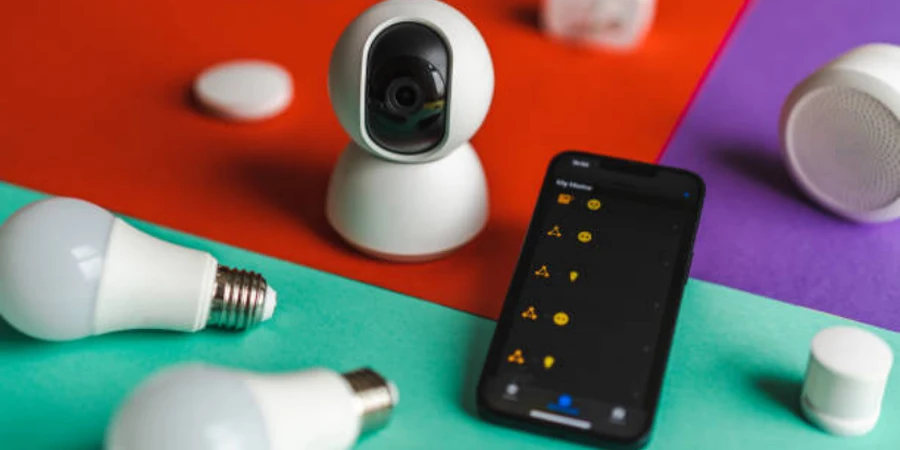In 2024, the smart home device sector continues to redefine convenience, security, and energy efficiency in living spaces. With an array of devices from voice-activated assistants to automated lighting systems, the landscape is brimming with innovations that cater to a diverse range of needs and preferences. These advancements not only enhance the functionality of homes but also offer significant benefits in terms of user interaction, adaptability to individual lifestyles, and integration with existing home ecosystems. As this domain evolves, it becomes increasingly vital for industry professionals to stay abreast of the latest trends and technologies to meet the growing demand for smart solutions that elevate the standard of living and operational efficiency in modern homes.
Table of Contents
1. Exploring smart home device varieties and their applications
2. Insights into the 2024 smart home device market
3. Key considerations for smart device selection
4. Highlighting 2024’s premier smart home devices
5. Conclusion
Exploring smart home device varieties and their applications
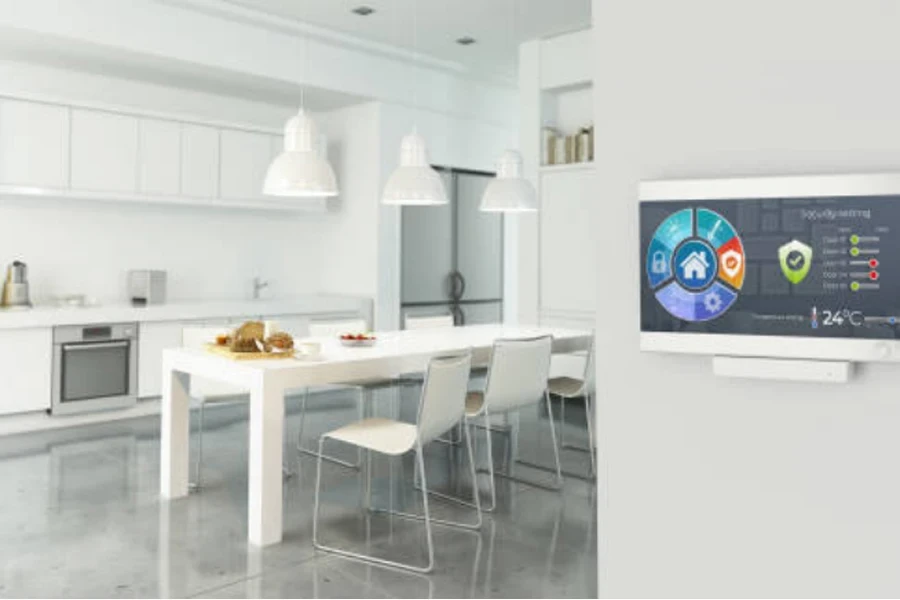
The realm of smart home devices in 2024 is marked by an impressive array of innovations designed to enhance the comfort, security, and efficiency of living spaces. Industry professionals are witnessing a significant transformation as these devices become more integrated, intelligent, and indispensable in modern homes.
Smart speakers and hubs
Smart speakers and hubs are pivotal components in the realm of smart home devices, serving as the foundational interface between users and their connected home environment. These devices act as centralized control points, enabling seamless interaction with a wide array of smart home gadgets, from lighting systems to security cameras, through voice commands or mobile applications.
Integration with home ecosystems
Smart speakers and hubs integrate deeply with home ecosystems, allowing for the orchestration of various devices to create a cohesive and automated living experience. They can be linked with virtually every aspect of a smart home, including entertainment systems, thermostats, smart locks, and appliances, facilitating a level of interoperability that was once the purview of high-end, custom installations. This integration is made possible through wireless communication standards such as Wi-Fi, Bluetooth, Zigbee, and Z-Wave, which enable these hubs to connect and communicate with multiple devices across different manufacturers.
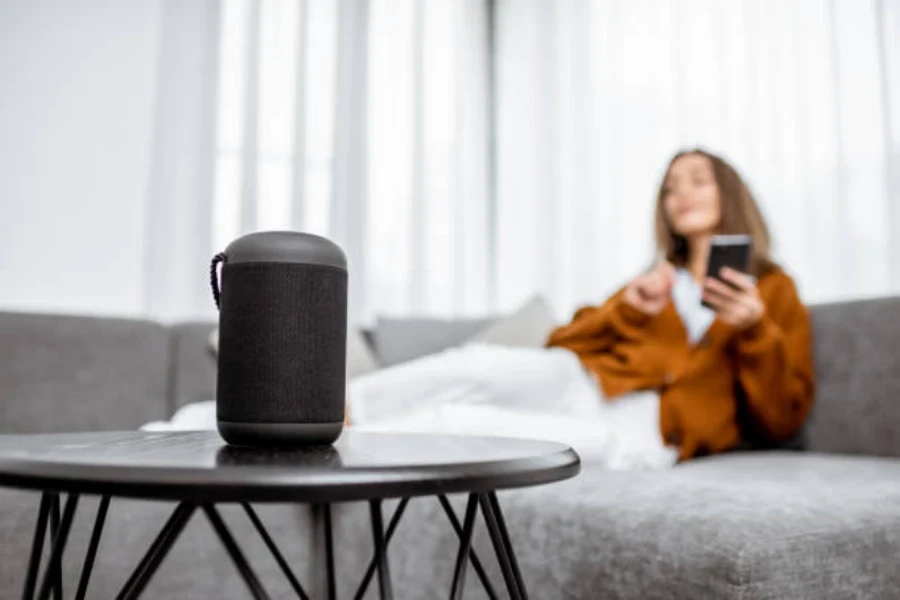
Voice assistant capabilities
The voice assistant capabilities embedded within smart speakers and hubs are what truly set them apart, offering users a hands-free method to control their home environment. These voice assistants, such as Amazon’s Alexa, Google Assistant, and Apple’s Siri, can understand and execute a wide range of commands. Users can ask these assistants to perform tasks like adjusting the thermostat, turning off the lights, playing music, or providing a weather update, all without lifting a finger. The intelligence of these voice assistants is continually evolving, with advancements in natural language processing and machine learning allowing for more complex queries and interactions.
Furthermore, voice assistants in smart speakers and hubs can be integrated with routines or scenes, where a single command triggers a series of actions across multiple devices. For example, saying “Goodnight” could turn off all lights, lock the doors, and set the alarm system. This level of automation not only enhances convenience but also contributes to energy efficiency and security.
In summary, smart speakers and hubs are the cornerstone of modern smart home systems, offering robust integration capabilities and intuitive voice assistant functionalities. They simplify the management of connected devices, making smart homes more accessible and enjoyable for users.
Security and surveillance

Security and surveillance-related smart home devices have become integral components of modern home security systems, offering homeowners advanced tools to monitor and protect their properties. These devices encompass a wide range of technologies, including smart cameras, sensors, and locks, each designed with innovative features to enhance security measures.
Smart cameras
Smart cameras have undergone significant advancements, transitioning from simple video recording devices to sophisticated security tools. Modern smart cameras offer high-definition video quality, ensuring clear and detailed footage. Innovations such as night vision capabilities allow for round-the-clock surveillance, while motion detection technologies enable cameras to intelligently identify and alert homeowners to unexpected movement within their premises. Some smart cameras also feature facial recognition technology, distinguishing between known occupants and strangers, and providing customized alerts accordingly.
Sensors
Sensors in the context of smart home security have expanded beyond basic door and window sensors. Today’s market includes a variety of sensors, such as motion sensors, glass break sensors, and water leak detectors, each serving a specific purpose. Motion sensors can trigger alarms or activate cameras when unexpected movement is detected, enhancing intruder detection. Glass break sensors add an additional layer of security by monitoring the sound frequencies associated with breaking glass, ideal for safeguarding against forced entry through windows. Water leak detectors alert homeowners to potential leaks or floods, preventing water damage and its associated security risks.

Smart locks
Smart locks represent a significant leap forward in door security technology. These devices allow for keyless entry, using codes, smartphones, or even biometrics for access, thereby eliminating the vulnerabilities associated with traditional keys. Features such as remote locking and unlocking through a smartphone app provide homeowners with control over their doors from anywhere, enhancing convenience and security. Smart locks can also generate temporary access codes for guests or service personnel, which can be set to expire after a certain time, ensuring that access is tightly controlled. Integration with other smart home devices, such as doorbell cameras, allows for comprehensive security solutions where homeowners can see and communicate with visitors before granting access.
These innovations in cameras, sensors, and smart locks have transformed home security, offering homeowners more control, flexibility, and peace of mind. The integration of these devices into a cohesive smart home system allows for real-time monitoring, instant alerts, and automated responses to potential security threats, ensuring that homes are safer and more secure than ever before.
Lighting and climate control
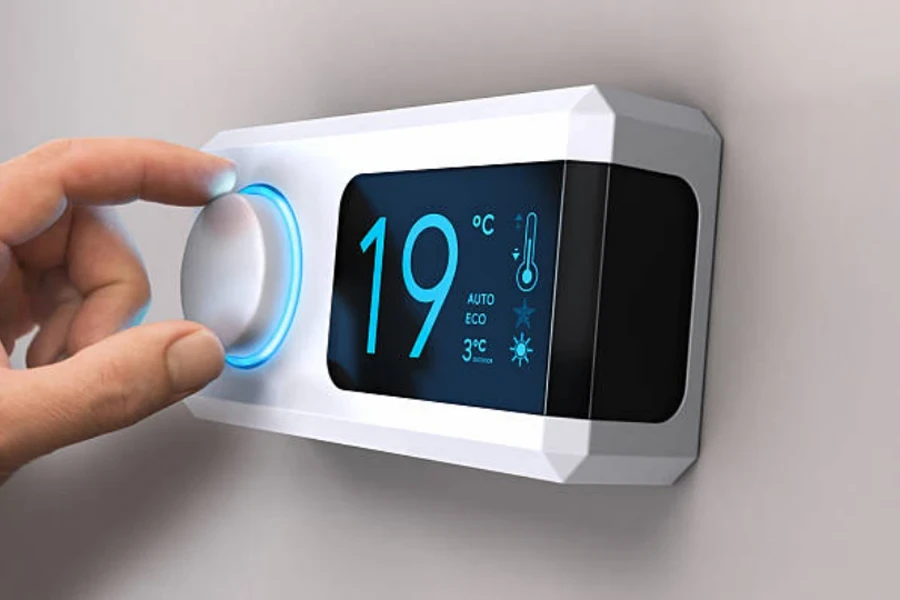
Lighting and climate control are pivotal aspects of smart home technology, focusing on enhancing comfort, convenience, and energy efficiency within living spaces. Significant advancements in these areas have led to the development of innovative solutions that not only improve the quality of life but also contribute to sustainable living practices.
Energy-efficient lighting
Advancements in energy-efficient lighting, particularly with the advent of smart LED bulbs, have revolutionized home lighting systems. These smart bulbs surpass traditional lighting solutions in both longevity and energy consumption, offering a greener alternative that significantly reduces electricity usage. Smart LED bulbs are equipped with features such as dimming capabilities, color temperature adjustments, and color-changing options, allowing users to customize their lighting atmosphere to suit various occasions, moods, or times of day.
Moreover, smart lighting systems can be programmed with schedules and routines, enabling lights to turn on or off based on specific triggers, such as sunrise and sunset, occupancy, or other smart home events. This level of automation not only enhances the user experience but also maximizes energy savings by ensuring lights are used only when needed.
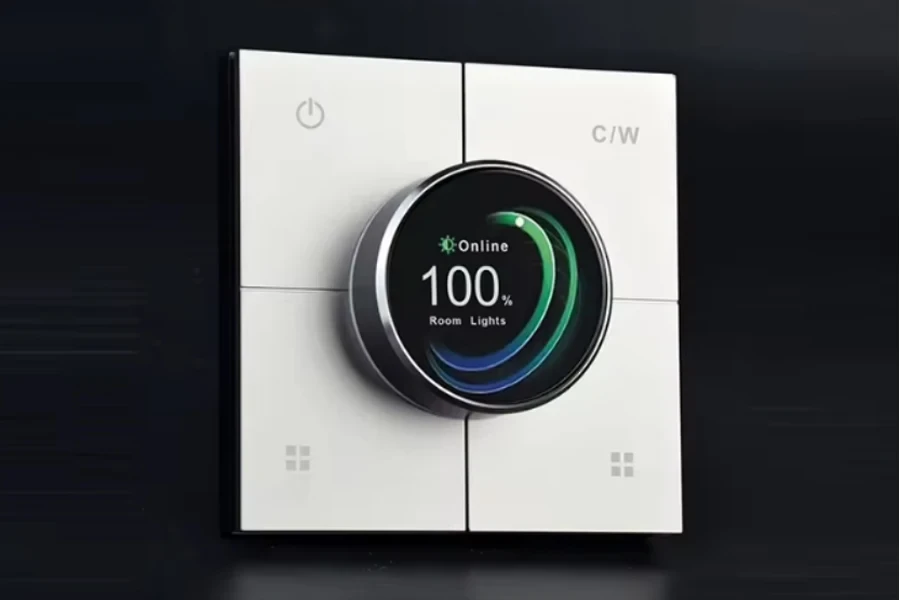
Smart thermostats
Smart thermostats represent another leap forward in climate control technology, offering unparalleled control over home heating and cooling systems. These devices go beyond simple programmability to incorporate learning algorithms that adapt to the daily routines and preferences of the occupants. By analyzing occupancy patterns and adjusting temperatures accordingly, smart thermostats ensure optimal comfort while minimizing energy waste.
In addition to adaptive learning, smart thermostats also provide remote control capabilities through smartphone apps, allowing users to adjust their home’s climate from anywhere. This feature is particularly useful for making adjustments when away from home, ensuring that energy is not wasted heating or cooling an empty house. Integration with other smart home devices, such as sensors and smart windows, enables a more comprehensive approach to climate management, further enhancing efficiency and comfort.
The advancements in energy-efficient lighting and smart thermostats underscore the smart home industry’s commitment to innovative solutions that prioritize both user experience and environmental sustainability. By leveraging these technologies, homeowners can enjoy a more comfortable, convenient, and eco-friendly living environment.
As the smart home device market continues to expand in 2024, industry professionals are tasked with navigating this ever-evolving landscape to select devices that best meet the needs of modern consumers. The key lies in understanding the intricate functionalities, interoperability, and potential of these devices to transform everyday living spaces into more intelligent, responsive, and comfortable environments.
Insights into the 2024 smart home device market

The 2024 smart home device market is characterized by notable trends in consumer adoption rates and evolving preferences, alongside significant developments in connectivity standards that are shaping the industry’s future.
Adoption rates and consumer preferences
Experts currently value the smart home device market at US$ 154.4 billion in 2024. They anticipate substantial growth in this sector, projecting it to reach US$ 231.6 billion by 2028. This expansion is expected to occur at a compound annual growth rate (CAGR) of 10.67% from 2024 to 2028, reflecting the increasing consumer adoption and technological advancements in smart home devices.
This upward trend is further evidenced by the projected increase in household penetration rates, expected to rise from 52.4% in 2024 to 75.1% by 2028 in the United States. The average revenue per installed Smart Home device is estimated to be US$555.00, indicating the value consumers place on integrating smart technologies into their homes.
Consumers are gravitating towards devices that offer convenience, enhanced security, and energy efficiency, reflecting a broader trend towards smarter, more connected homes. Preferences are notably diverse, with particular interest in smart speakers and hubs for their central role in home automation, security devices for peace of mind, and energy-saving solutions like smart lighting and thermostats for their long-term cost and environmental benefits.
Impact of connectivity standards
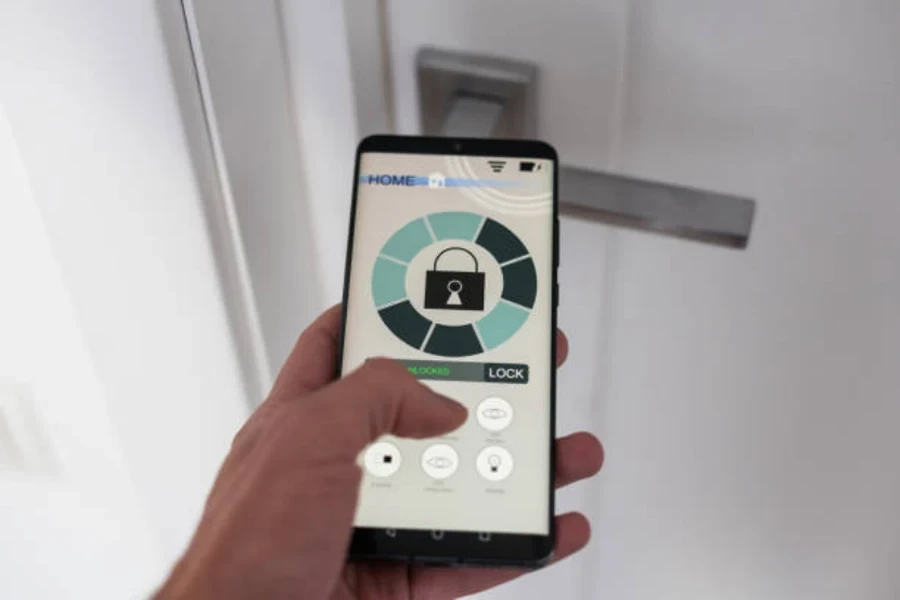
A pivotal development in the smart home device market is the emergence and adoption of connectivity standards like Matter. This new standard aims to foster interoperability among different smart home devices, regardless of the manufacturer, making it easier for consumers to create a cohesive and functional smart home ecosystem. The promise of Matter and similar standards lies in their ability to simplify the setup and integration of smart devices, encouraging broader adoption by ensuring that devices from different brands can work seamlessly together. This move towards standardization is expected to solve one of the significant challenges in the smart home industry – the fragmentation and compatibility issues that have previously hindered the full potential of smart home systems.
As the smart home device market continues to evolve in 2024, these trends in consumer behavior and technological advancements are set to define the landscape. The increasing adoption rates reflect a growing consumer confidence in smart home technologies, while the emphasis on connectivity standards like Matter highlights a collective industry effort towards creating more integrated and user-friendly smart home environments.
Key considerations for smart device selection

When selecting smart home devices, several key considerations ensure that the chosen technologies seamlessly integrate into existing ecosystems, uphold privacy and security standards, and remain relevant in the face of rapidly evolving tech landscapes.
Compatibility and ecosystem integration
In the evolving landscape of smart home technology, ensuring compatibility and seamless integration within existing ecosystems is paramount. This involves selecting devices that not only fulfill immediate needs but also harmonize with the broader network of smart technologies within a home.
The cornerstone of a cohesive smart home system lies in the compatibility of its components. Devices should not only connect with each other but also integrate smoothly with the central hub or control system. For instance, smart speakers like Amazon Echo (Alexa), Google Home (Google Assistant), and Apple’s HomePod (Siri) serve as primary interfaces for voice-controlled smart homes. These platforms support a wide array of devices through various communication protocols such as Zigbee, Z-Wave, Wi-Fi, and Bluetooth, ensuring broad compatibility across different brands and product types.

Amazon’s Alexa, with its expansive market share, has become synonymous with voice-activated smart homes, supporting an extensive range of compatible devices. Google Home, known for its integration with Google’s suite of services and intuitive voice commands, and Apple HomeKit, favored for its seamless operation within the Apple ecosystem, offer similar levels of device interoperability. Samsung’s SmartThings further exemplifies versatility, acting as a hub that connects devices from multiple manufacturers, enhancing the user’s ability to manage their smart home ecosystem efficiently.
When considering ecosystem integration, it’s essential to focus on how well a device can communicate within the established network and adapt to the user’s lifestyle. For example, a smart thermostat should not only be able to receive commands from the central hub but also communicate with other devices like smart blinds or windows to regulate a home’s temperature effectively.
The importance of open standards in this context cannot be overstated. Protocols like Zigbee and Z-Wave facilitate device interoperability, enabling a mesh network that enhances the range and reliability of the smart home system. Choosing devices that adhere to these standards ensures a higher degree of flexibility and future-proofing, allowing for the addition of new devices without the need for extensive reconfiguration.
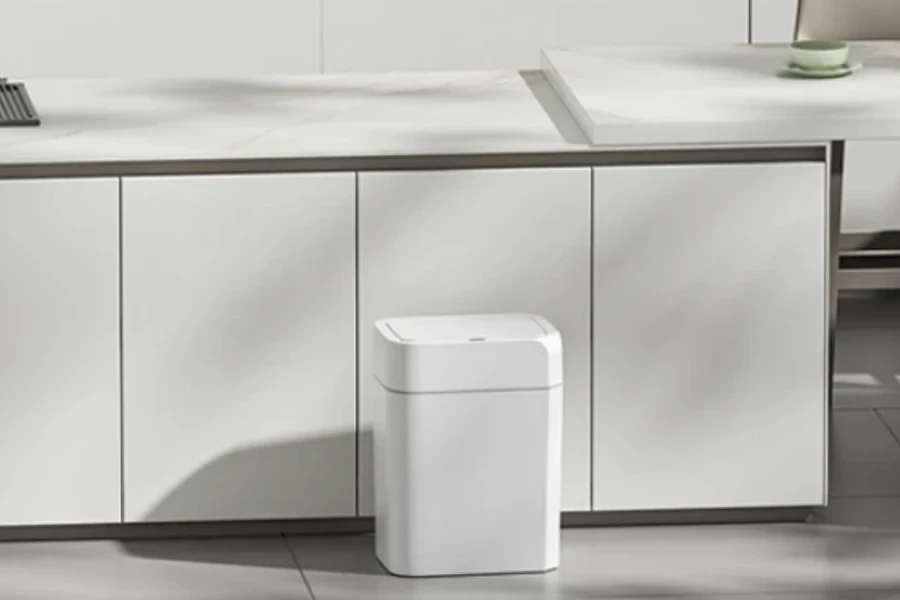
Moreover, the advent of the Matter standard promises to further unify the smart home industry by enabling devices across different ecosystems to work together seamlessly. This initiative, backed by major industry players, aims to simplify the development and enhance the compatibility of smart home devices, making it easier for consumers to expand their smart home systems without worrying about compatibility issues.
In summary, the key to successful smart home integration lies in selecting devices that not only meet individual needs but also fit within the broader ecosystem, ensuring ease of use, interoperability, and the ability to adapt to future technological advancements. By prioritizing compatibility and ecosystem integration, users can create a more harmonious, efficient, and future-proof smart home environment.
Privacy and security features
In the rapidly expanding domain of smart home devices, where an estimated 21.3% of households globally are expected to be equipped with such technologies by 2025, the delicate balance between convenience and security becomes increasingly crucial. As smart home devices weave into the fabric of daily life, offering unmatched convenience, safety, comfort, and entertainment, the shadow of data protection and privacy concerns looms large.

Data Security Concerns: Smart home devices are privy to a wealth of personal information, making data security a paramount concern. The apprehension around these devices stems from two primary sources: the potential for unauthorized data collection by manufacturers and the threat of malicious intrusions by external attackers. An ADT survey highlighted this concern, revealing that 93% of smart home device users are wary of how their data is shared by companies. This skepticism is not unfounded, given numerous reports showcasing how smart devices can become inadvertent conduits for privacy breaches.
Unauthorized Data Collection and Usage: The investigation by Surya Mattu and Kashmir Hill into smart home device data collection practices sheds light on the extent of personal information these devices can gather. By monitoring the data traffic from smart home devices in Hill’s apartment, Mattu was able to capture intimate details about the occupants, underlining the invasive potential of these technologies. Furthermore, privacy policies often contain vague language, such as “but not limited to,” granting manufacturers broad leeway in data collection and use, sometimes extending beyond the bounds of explicit consent.
Unauthorized Data Access and Intrusion: The security vulnerabilities in devices like the Nest Cam IQ, which could allow hackers to take control of the device, underscore the risks associated with smart home technologies. These vulnerabilities can lead to a range of malicious activities, from denial-of-service (DOS) attacks that disrupt device functionality to man-in-the-middle (MitM) attacks that compromise data integrity and privacy.
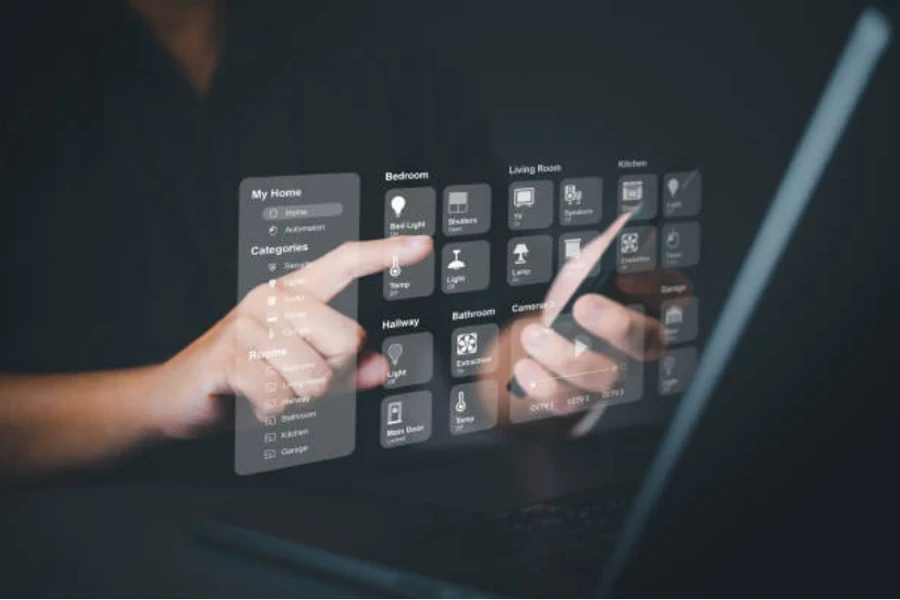
Evaluating Device Security Measures: When selecting smart home devices, it is imperative to scrutinize the security measures in place to safeguard user data. This includes assessing the robustness of encryption protocols for data transmission and storage, the frequency and transparency of software updates provided by the manufacturer, and the device’s resistance to common cyber threats such as DOS and MitM attacks.
Privacy Settings and Permissions: Devices should offer granular control over privacy settings, allowing users to dictate how their data is used and shared. Permissions should be configurable, enabling users to deny or limit access to sensitive information. It is also advisable to disconnect devices from the network when not in use or when they are no longer needed, to prevent unauthorized access.
Secure Access and Network Segregation: Adhering to basic security hygiene, such as changing default passwords to strong, unique alternatives, enabling multi-factor authentication, and segregating IoT devices on a separate network from personal devices, can significantly enhance the security posture of a smart home setup.
In conclusion, as smart home devices proliferate, the onus is on both manufacturers and users to ensure that convenience does not come at the expense of privacy and security. By making informed choices about device selection and adhering to best practices in device management and network security, users can mitigate the risks and harness the benefits of smart home technologies without compromising their privacy and data security.
Future-proofing and scalability

In the context of rapidly evolving IoT and smart home technologies, future-proofing and scalability are paramount considerations for ensuring the longevity and relevance of smart home devices. The IoT market is projected to see an installed base of over 30 billion units by 2025, underscoring the critical need for devices that are not only smart and secure but also capable of adapting to future innovations and standards.
Embracing Interoperability Standards: One of the critical challenges in the smart home ecosystem is the prevalence of incompatible protocols, leading to devices that struggle to function effectively across different ecosystems. The industry’s move towards greater interoperability is crucial in this regard. Efforts like the Zigbee Alliance’s Connected Home Over IP (CHIP), now rebranded as the Matter protocol, aim to ensure seamless and intuitive consumer experiences across devices and protocols. Matter, in particular, stands out for its promise to unify smart home devices under a common standard, enhancing their ability to communicate and collaborate regardless of the manufacturer.
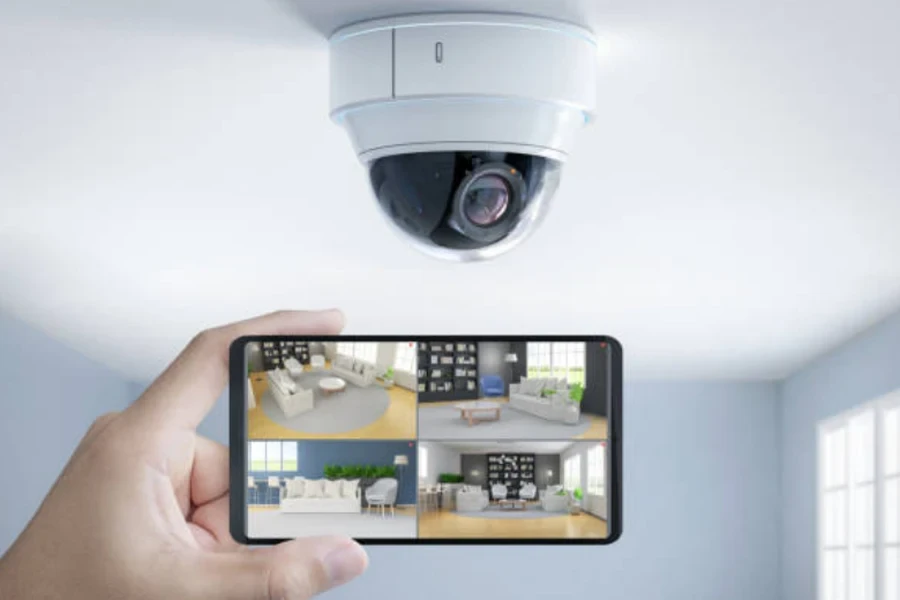
The Shift to Actively Intelligent Devices: The transition from passively obedient devices to actively intelligent systems marks a significant leap towards future-proofing smart homes. Actively intelligent devices employ machine learning to observe and infer a family’s preferences and patterns, allowing them to make autonomous decisions. This capability transforms smart homes from mere executors of predefined tasks to dynamic ecosystems that optimize performance based on real-time data and individual preferences. Such systems can adjust their operations to cater to the specific needs of different household members, offering personalized experiences and superior efficiency.
Navigating the Future with Smart Devices: For smart home devices to remain relevant and useful in the long term, they must be designed with future technologies in mind. This entails support for upgradable firmware and compatibility with emerging standards, allowing devices to evolve alongside advancements in IoT technology. By adhering to interoperability standards like Matter and incorporating machine learning for enhanced autonomy and personalization, smart home devices can provide users with a seamless, secure, and adaptable living environment.
In summary, future-proofing smart home devices involves a multifaceted approach that encompasses interoperability, intelligent automation, rigorous security, and adaptability to future advancements. By prioritizing these aspects, manufacturers and consumers alike can ensure that smart home technologies remain valuable, secure, and versatile components of the digital household, capable of evolving with the ever-changing landscape of IoT innovations.
Highlighting 2024’s premier smart home devices
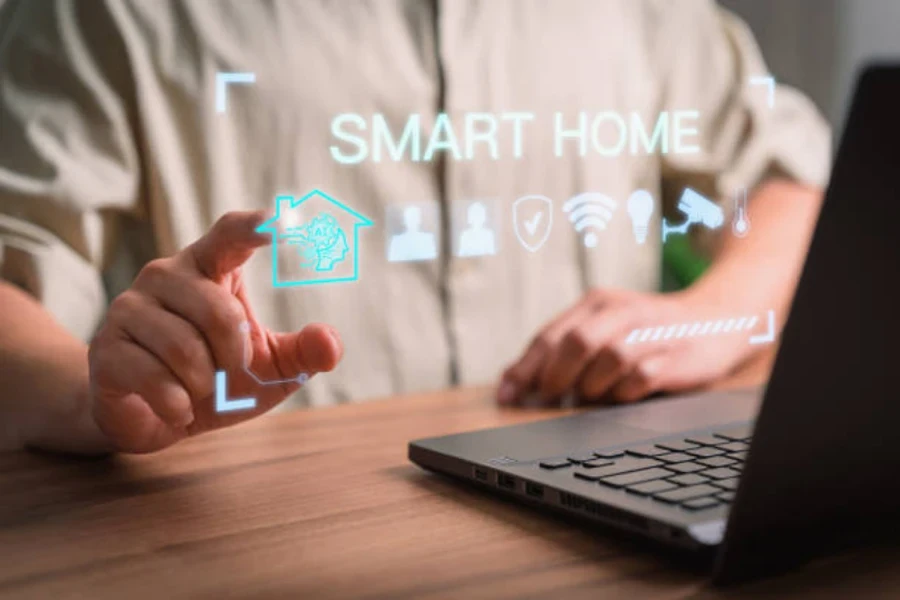
The landscape of smart home devices in 2024 is a testament to the rapid evolution of technology, offering enhanced functionality, user experience, and energy efficiency. This year’s standout smart home devices, particularly in the realms of audio control, security, and climate management, showcase the industry’s commitment to innovation and sustainability.
Innovative smart speakers and hubs
In 2024, the landscape of smart speakers and hubs is dominated by devices that not only enhance audio experiences but also serve as central command centers for smart homes, offering unparalleled control and integration.
Amazon Echo (4th Gen)
The fourth-generation Amazon Echo sets itself apart with its spherical design and improved audio capabilities. This model marks a significant leap in sound quality, offering a richer and more nuanced audio experience compared to its predecessors. The Echo’s integration with the Zigbee home automation protocol allows it to act as a smart home hub, enabling direct control over compatible devices without the need for additional hubs. Its versatility is further enhanced by Alexa’s robust voice control capabilities, allowing users to manage a wide array of smart home devices, set reminders, and access streaming services seamlessly. The Echo’s ability to detect unusual sounds, such as glass breaking or smoke alarms, and send alerts to users adds an extra layer of utility, positioning it as a multifunctional device that goes beyond music playback.
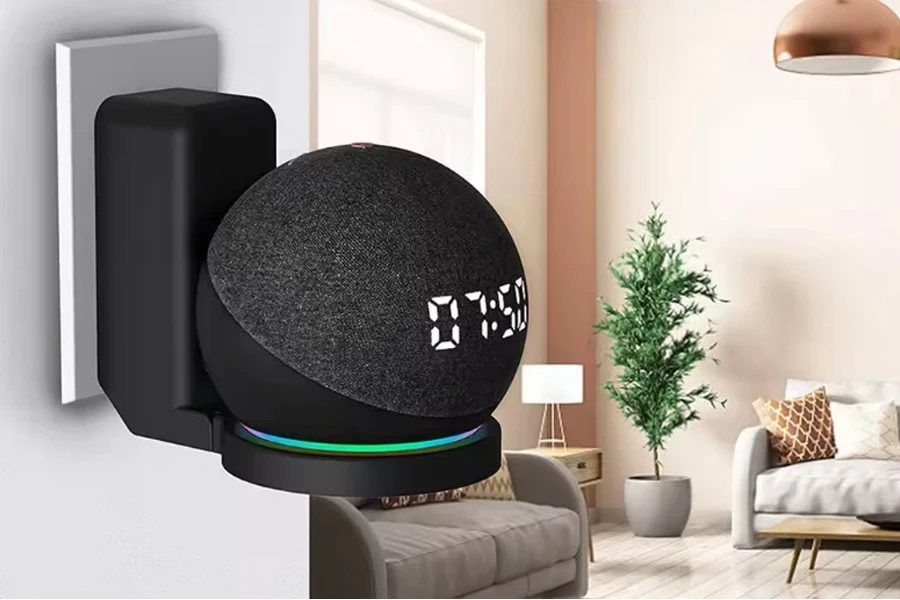
Amazon Echo Dot (5th Gen)
The Echo Dot (5th Gen) emerges as the best budget option, packing a surprising amount of features into a compact and affordable package. This model introduces a temperature sensor and an Eero mesh extender, expanding its utility within the smart home ecosystem. Despite its small size, the Echo Dot delivers commendable sound quality with clear vocals and sufficient bass, making it an excellent choice for casual listening and voice interactions. Its design also incorporates a tap-to-snooze feature, adding convenience for users. The Echo Dot’s ability to perform well across various functions, from music playback to smart home control, all while maintaining an accessible price point, makes it a standout choice for those seeking value.
Google Nest Mini (2nd Gen)
The Google Nest Mini (2nd Gen) holds its ground as the premier choice for users embedded in Google’s ecosystem. With Google Assistant at its core, the Nest Mini excels in understanding and executing voice commands, even when device names are not precisely remembered. This level of voice recognition and response accuracy sets it apart, making smart home management more intuitive and efficient. While its sound quality is commendable for its size, where the Nest Mini truly shines is in its smart capabilities, offering users a seamless way to interact with their smart home devices and access Google’s suite of services through voice commands.
Each of these devices exemplifies the advancements in smart speaker technology in 2024, offering users a blend of high-quality audio, sophisticated voice control, and comprehensive smart home integration. Whether one prioritizes sound quality, budget-friendliness, or seamless integration with a specific ecosystem, the market offers compelling options that cater to diverse needs and preferences.
Advanced security devices
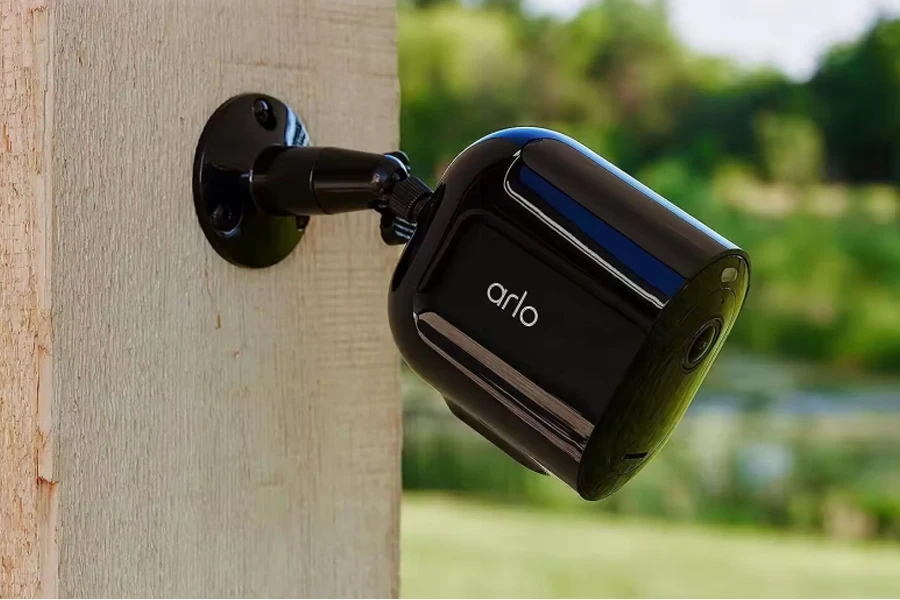
In 2024, the advancements in home security devices are epitomized by state-of-the-art cameras and systems equipped with AI-driven features, offering unprecedented security and surveillance capabilities.
Arlo Pro 5S 2K Spotlight Camera
The Arlo Pro 5S 2K Spotlight Camera leads the pack with its comprehensive suite of features tailored for robust home security. This camera distinguishes itself with a 2K resolution enhanced by HDR optimization, ensuring crystal-clear footage under various lighting conditions. Its color night vision capability, supported by an integrated spotlight, ensures detailed video capture even in low-light scenarios. The camera’s extra-wide field of view covers more ground, providing a comprehensive view of any space. One of the standout features is its AI-driven person, vehicle, and package detection, which smartly categorizes and alerts users to the nature of the motion detected, reducing false alarms and focusing on relevant events. The Arlo Pro 5S is designed for versatility, offering both wired and battery-powered options, catering to different user needs and installation scenarios.
Lorex 2K Wi-Fi Floodlight Camera
The Lorex 2K Wi-Fi Floodlight Camera merges high-resolution surveillance with powerful illumination, making it an ideal choice for securing outdoor spaces like driveways and backyards. This camera features a 2K resolution that captures detailed footage, ensuring that no critical detail is missed. The floodlight not only deters potential intruders but also enhances the camera’s ability to record in color at night, providing clear and actionable footage. The camera is equipped with advanced motion detection algorithms that intelligently distinguish between people and vehicles, minimizing unnecessary alerts. Its robust design and IP67 rating ensure durability against harsh weather conditions, making it a reliable security solution year-round.
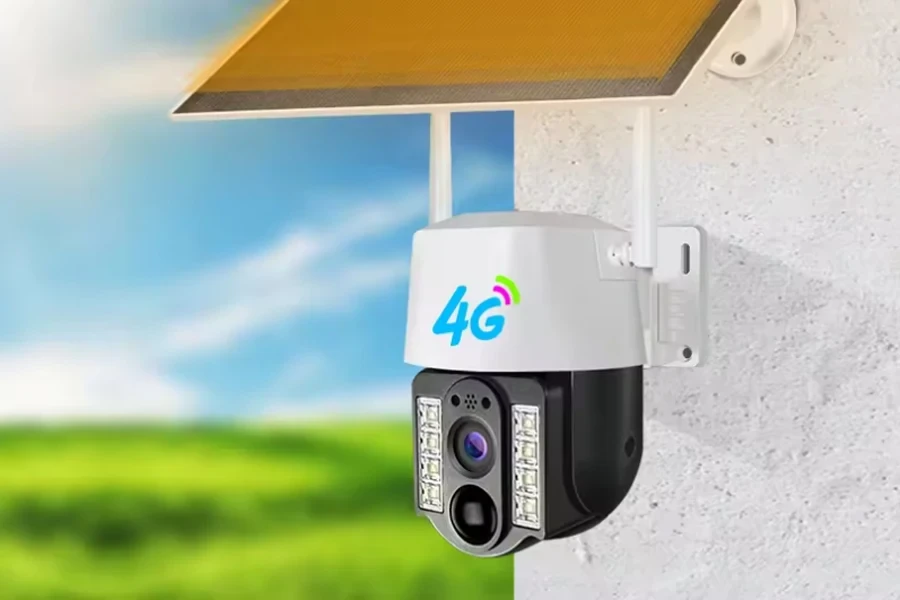
Eufy SoloCam S230 with Integrated Solar Panel
The Eufy SoloCam S230 stands out with its integrated solar panel, offering a sustainable and maintenance-free operation by harnessing solar energy to power the camera. This feature eliminates the need for frequent battery replacements or wired power sources, making it an eco-friendly and convenient option for users. The camera boasts a 2K resolution that delivers sharp and clear images, ensuring that every detail is captured with precision. Its AI-driven person detection feature intelligently identifies human figures, reducing false alarms caused by pets or passing cars. The SoloCam S230’s design emphasizes ease of installation and operation, making it an accessible security solution for a wide range of users.
These advanced security devices of 2024 exemplify the integration of AI technology in home security, offering users enhanced surveillance capabilities, smarter detection features, and greater convenience. Whether it’s the comprehensive coverage of the Arlo Pro 5S, the illuminating security of the Lorex Floodlight Camera, or the sustainable operation of the Eufy SoloCam S230, these devices cater to the diverse needs of modern homeowners seeking reliable and intelligent security solutions.
Energy-efficient lighting and climate solutions
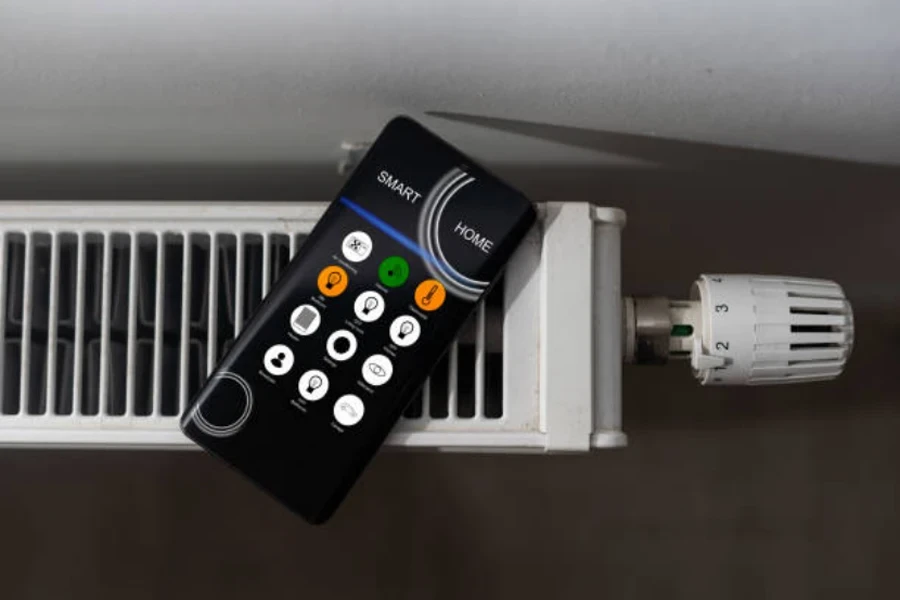
In 2024, the focus on energy efficiency and customization in smart home devices is exemplified by the latest offerings in smart lighting and climate control solutions. These devices not only enhance the comfort and ambiance of living spaces but also contribute to significant energy savings.
Top smart lighting solutions
Smart lighting has transformed how we light our homes, offering a blend of convenience, efficiency, and aesthetics. Leading the charge is the Wyze Bulb Color, a budget-friendly option that doesn’t skimp on features. It shines with the ability to produce 16 million colors and a range of warm to cool white tones, making it versatile for any setting or mood. Its compatibility with Amazon Alexa and Google Assistant allows for easy voice control, and its support for custom scenes and scheduling makes it a smart choice for those looking to personalize their lighting experience.
For those with specific lighting needs, the Wyze Bulb Color BR30 is tailored for recessed fixtures, offering a floodlight-like illumination that’s ideal for spaces like kitchens and bathrooms. Like its A19 counterpart, it supports a vast spectrum of colors and integrates seamlessly with smart home systems for voice control and automation.
The Wyze Light Strip Pro brings accent lighting to the next level, with a thin, flexible strip of LEDs that can adhere to almost any surface. It stands out for its affordability and feature set, which includes a range of colors, effects, and music sync capabilities, making it perfect for creating ambiance or enhancing entertainment spaces.
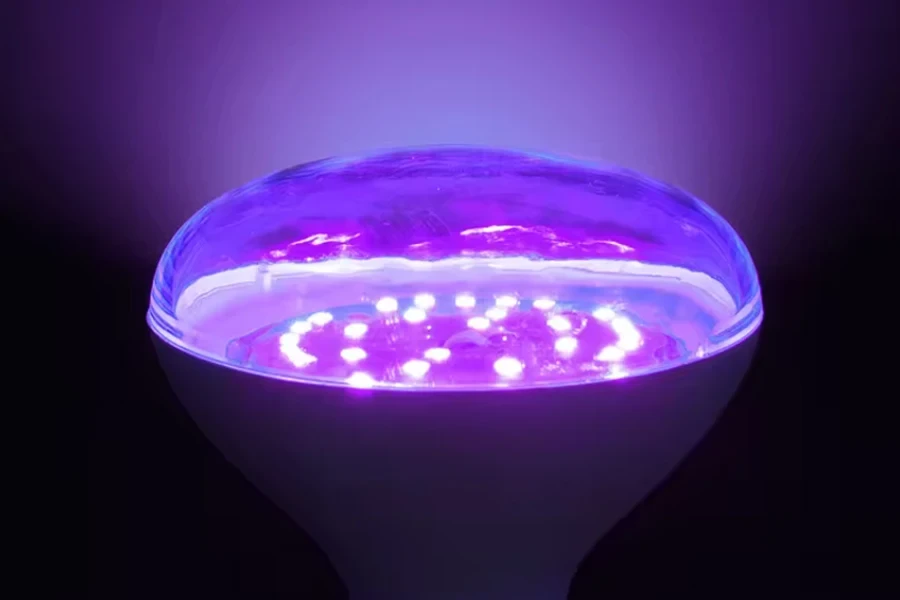
Best smart climate control solutions
The Ecobee (5th Gen) thermostat remains at the forefront of smart climate control, with its refined design and enhanced functionality. It’s lauded for its built-in Alexa capabilities, superior audio performance, and Spotify support, making it more than just a thermostat. Its redesigned remote sensors now offer extended range and battery life, ensuring more accurate temperature control across different rooms.
The Nest Learning Thermostat v.3 continues to impress with its intuitive learning capabilities, sleek design, and broad compatibility with smart home systems. Its ability to adapt to your schedule and preferences, coupled with its high-quality display and premium build, make it a top choice for those seeking both functionality and aesthetics in a thermostat.
For those on a budget, the Honeywell RTH6580WF offers a compelling mix of features at a fraction of the cost of its competitors. It provides robust smart home integration and remote control capabilities, making it an excellent entry point into smart climate control.
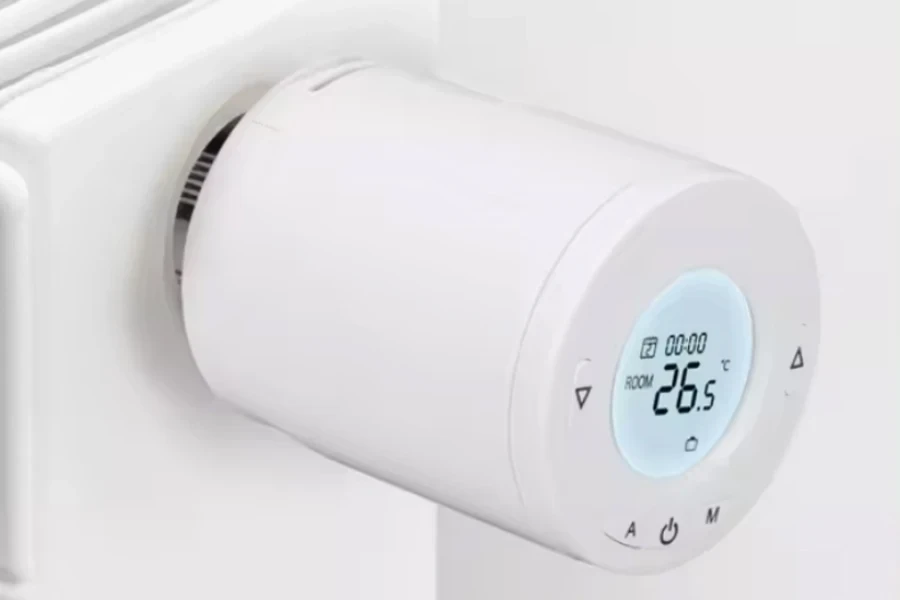
These leading smart bulbs and thermostats of 2024 exemplify the industry’s commitment to delivering products that not only enhance the user experience through customization and convenience but also promote energy efficiency and sustainability in smart homes.
Conclusion
Navigating the smart home device market with an informed perspective is crucial, as these technologies hold significant potential to enhance daily living. By prioritizing devices that offer seamless integration, robust security, future-proof features, and energy efficiency, users can create more comfortable, convenient, and sustainable living environments. The advancements in smart speakers, security systems, and climate control solutions in 2024 exemplify this potential, promising a smarter and more connected future for homes.
